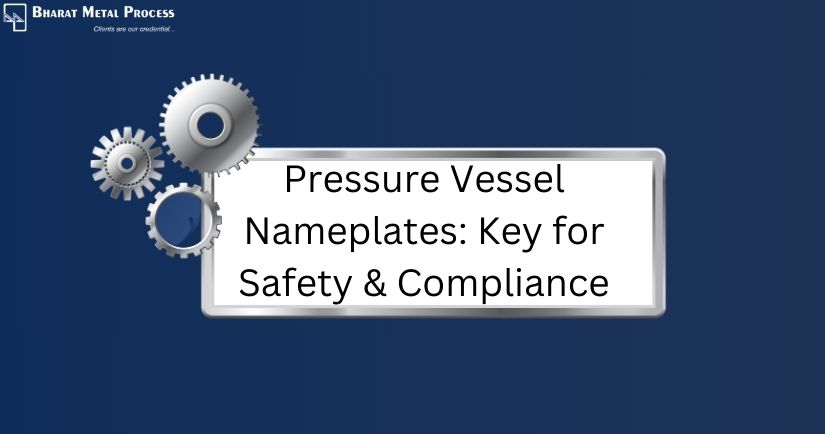Pressure Vessel Nameplates: Key for Safety & Compliance

The nameplate is a very important feature in the fabrication, operation, and maintenance of pressure vessels. The information contained in the nameplate includes valuable information that aids in operating the vessel within safe limits and maintaining it per regulatory requirements. The information contained on these nameplates is not just for compliance but also very vital for the safety, efficiency, and long life of the pressure vessel.
What is a Pressure Vessel Nameplate?
The pressure vessel is a closed container designed to store gases or liquids at a pressure substantially different from that of the ambient. These are used in various industries, which include oil and gas, chemical processing, generation of power, and manufacturing. Owing to the probably harmful nature of their content and the highly used pressure, pressure vessels fall into the strict regulation and standards to ensure safety in operation. Importance of Pressure Vessel Nameplates
Nameplates on pressure vessels are important for a number of reasons, including
Regulatory Compliance: Pressure vessels come under various codes and standards of different countries and international organizations. In the United States, they come under the ASME Boiler and Pressure Vessel Code. Most of these standards require specific details to be permanently attached to the vessel. The nameplate serves to ensure that the vessel is in compliance with these requirements.
Safety: The nameplate details also provide information on safety, such as maximum allowable working pressure, MAWP, design temperature, and material specification. Therefore, the operators depend on that information to operate the vessel within the safe limit so as to avoid accidents or catastrophic failures.
Maintenance and Inspection: Pressure vessels have to be duly inspected and maintained on a regular basis. The nameplate gives valuable data to inspectors and maintenance personnel regarding determining the condition of the vessel for continued serviceability. It has valuable information about the date of manufacture, the name of the manufacturer, and serial number of the vessel regarding record purposes of the history of the vessel about repairs or modifications made earlier.
The nameplate gives information that allows for the operators to run the vessel very effectively. The process could be optimized with the vessels' limitations and capability minimizing the use of energy and prolonging the life cycle of a vessel.
The information content of a pressure vessel nameplate is exact depending on relevant standards concerning application of a vessel. Thus, common components in most name plates include the following:
Manufacturer Information: The name and the logo of the company that manufactured it was easily identifiable to hold them accountable.
Serial Number: A singular number given to the vessel, which should link it with its manufacturing records. This will be useful for tracing the history of the vessel in terms of repairs, modifications, and incidents, among other things.
MAWP stands for Maximum Allowable Working Pressure, the highest pressure under which it is possible to work with this vessel in a safe manner. The possibility of vessel failure exists when it is exceeded; this is probably one of the most important pieces of information carried on the nameplate.
Design Pressure: Although similar with MAWP, this is the pressure that the vessel was actually designed for under normal operating conditions. Usually, design pressure is a bit higher than the MAWP for safety.
Design Temperature: A range of temperature within which the vessel can operate without compromise in the integrity of its materials. When operations are carried out at temperatures outside this range, the materials that constitute the vessel are then no longer intact.
Material Specifications: Material composition of the vessel, mentioning the type and grade of the metal used in its making. This is fundamental in establishing that the vessel is right for the appropriate application and environment.
Volume or Capacity: Total internal volume of the vessel, normally measured in liters or gallons. It helps the operators understand the vessel's capacity and take care not to overfill it.
Year of manufacture: It indicates the year in which the vessel was manufactured and thus would play a role in estimating the age and hence the remaining life of the same.
Connect with us
Contact Usbharat Metal Process
phone: 04424762531
Location: No: 40, Anna Salai, Dhiraviam Nagar, Porur, Chennai, Tamil Nadu- 600116, India